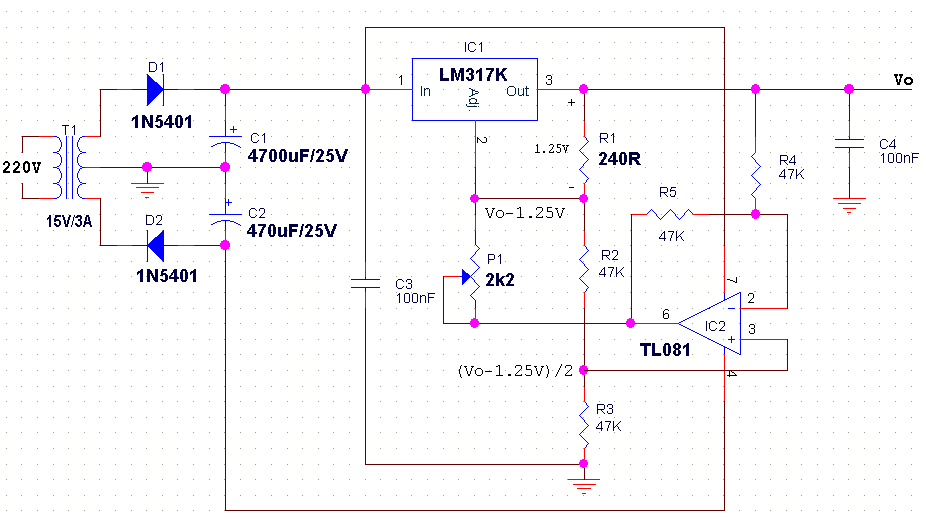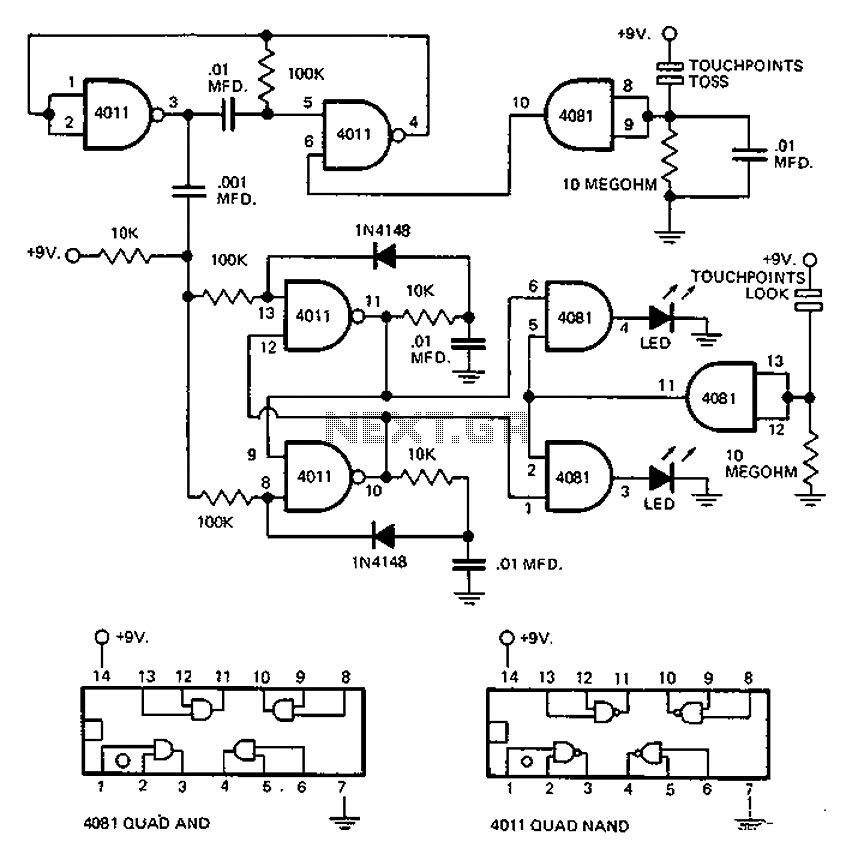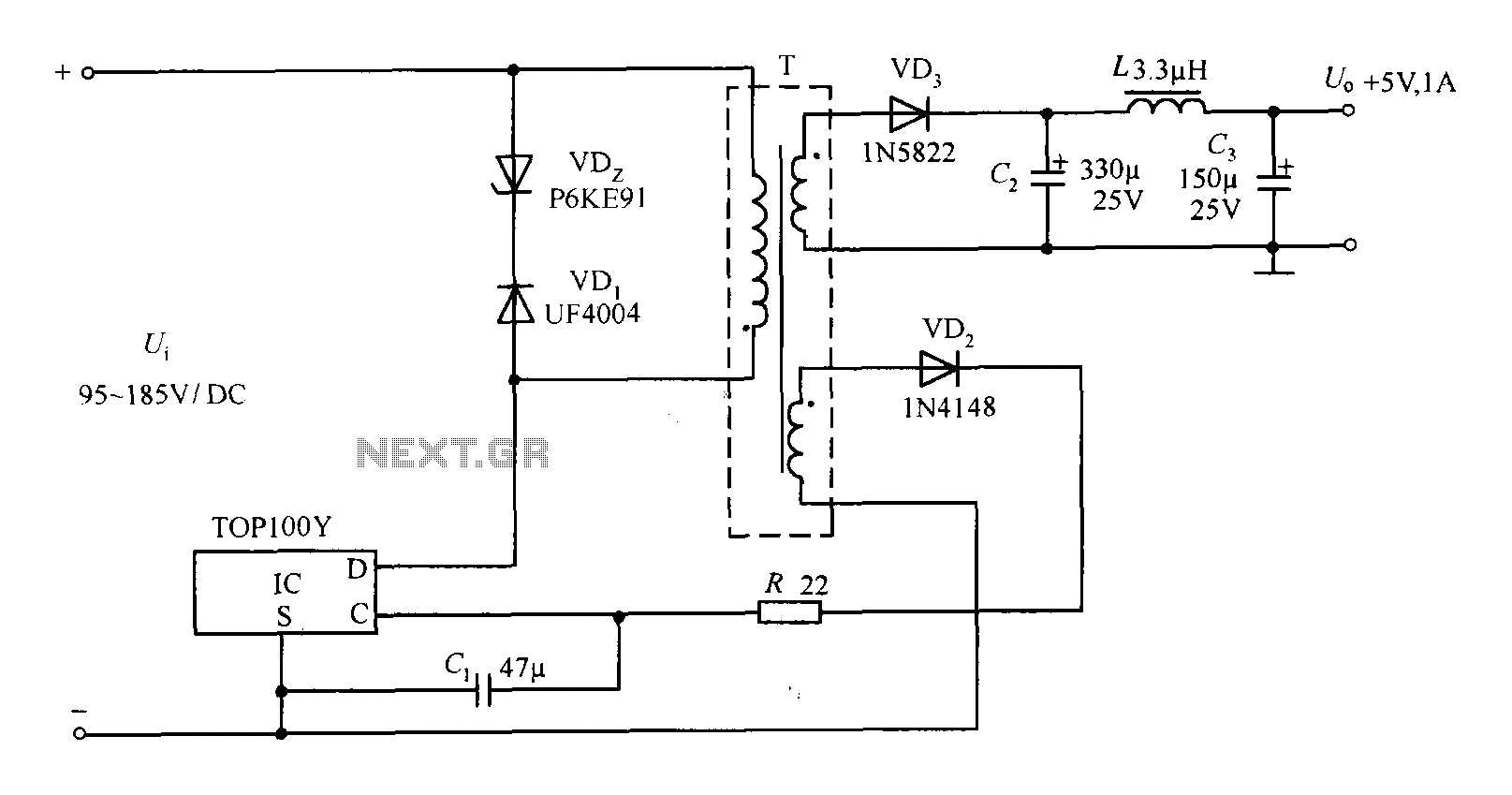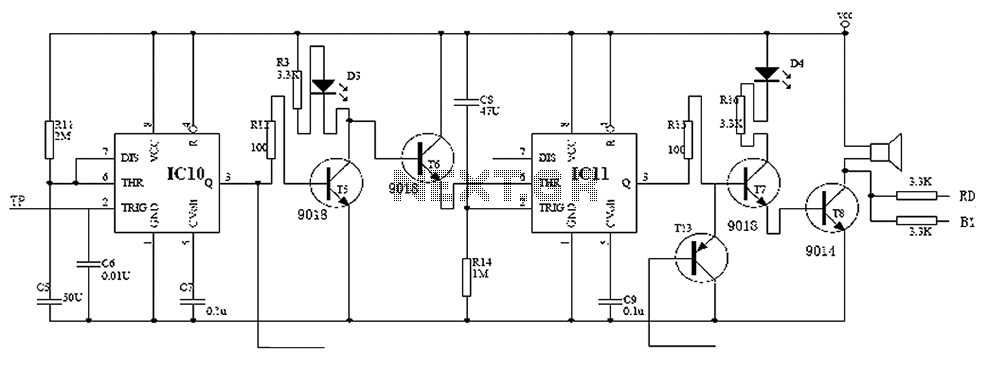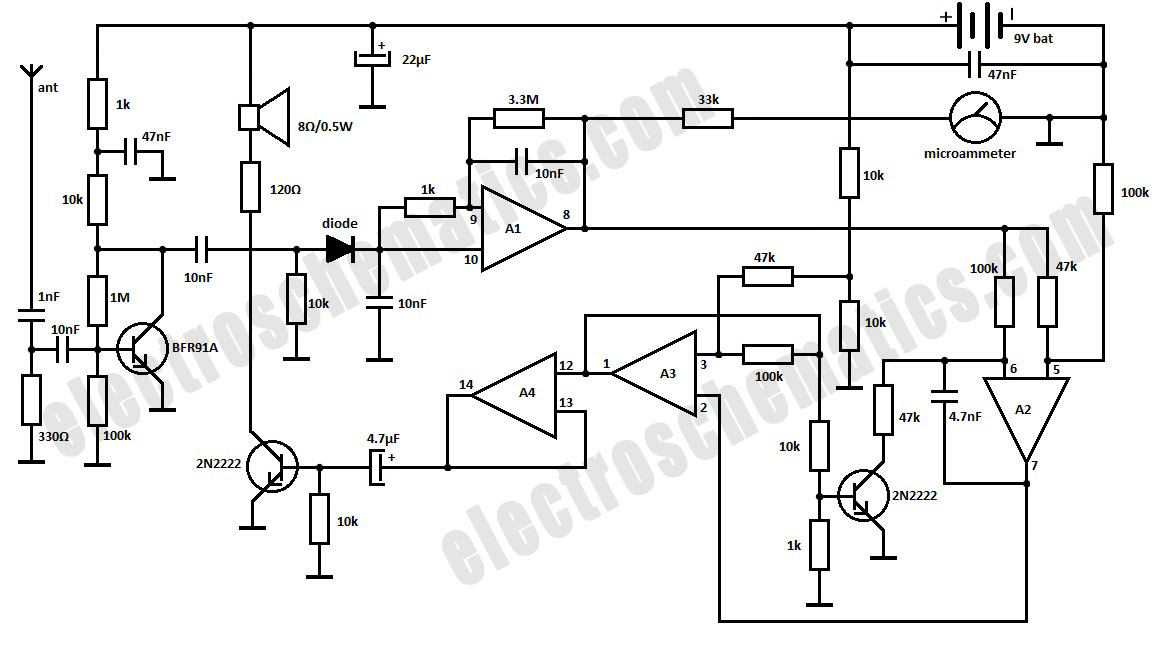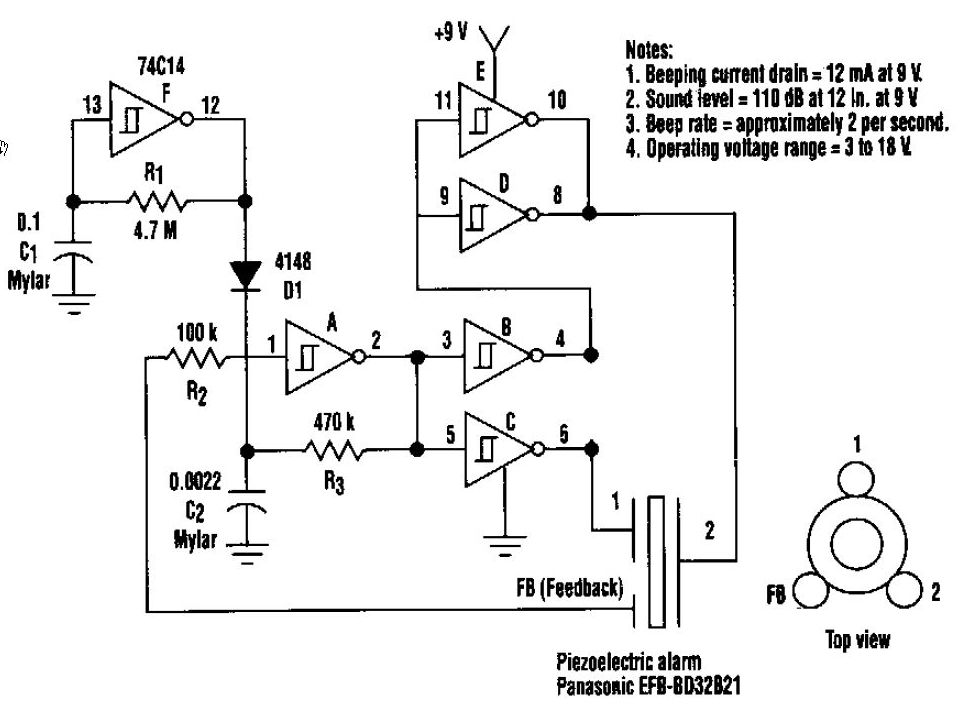
VFO/BUFFER circuit
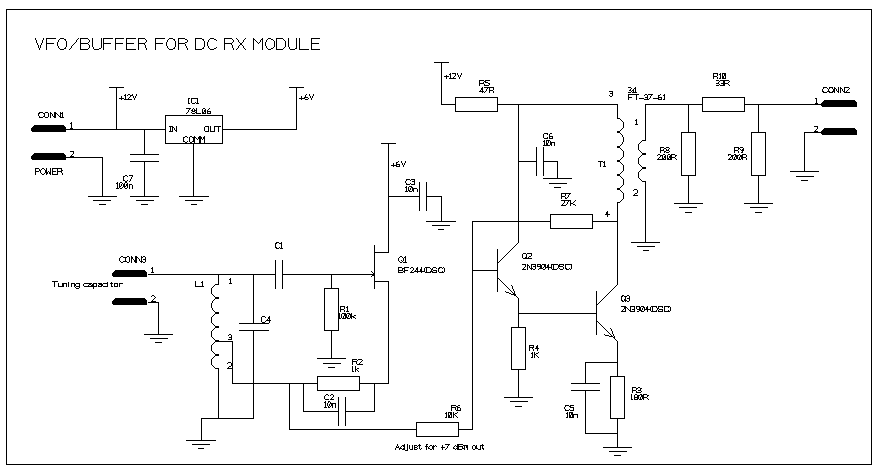
It is essentially a standard Hartley oscillator, with an output of +7 dBm into 50 Ohms. It is advised against adding a gate diode, as this circuit does not require it and such an addition would degrade phase noise performance, according to Ulrich Rohde. The oscillator should be suitable for any frequency up to 10 MHz or more, depending on the builder's skill in creating drift-free oscillators, and can be tuned using an appropriate capacitor or varicap tuning diode. It is crucial for this circuit to be housed in a suitable screened enclosure when used with a DC receiver, and measures should be taken to minimize the oscillator signal from reaching the receiver input to reduce hum and microphonics. This precaution is unnecessary if the oscillator operates at half the input frequency and is processed through a balanced doubler, as implemented in the Kanga US version of Campbell's binaural receiver.
The Hartley oscillator is a type of LC oscillator that utilizes an inductor-capacitor (LC) network to generate oscillations. The circuit typically consists of two inductors and a capacitor, forming a feedback loop that sustains the oscillation. In this configuration, the output power of +7 dBm indicates a strong signal suitable for driving a 50 Ohm load, which is standard for RF applications.
The recommendation against using a gate diode is significant, as the inclusion of such a component can introduce additional non-linearities and noise into the circuit. Phase noise is a critical parameter in oscillator design, particularly in communication systems, where signal clarity and stability are paramount. Ulrich Rohde's insights emphasize the importance of maintaining the oscillator's original design integrity to achieve optimal performance.
The frequency range of up to 10 MHz is typical for Hartley oscillators, but achieving higher frequencies may require careful component selection and layout techniques to minimize drift. The tuning capability through a capacitor or varicap tuning diode allows for fine adjustments to the output frequency, making this circuit versatile for various applications.
When integrating this oscillator with a DC receiver, it is essential to use a screened enclosure to prevent electromagnetic interference (EMI) from affecting the receiver's performance. The enclosure acts as a Faraday cage, shielding the sensitive receiver components from extraneous signals that could introduce hum or microphonics. Additionally, careful routing of signals and the use of twisted pair wiring can further mitigate unwanted coupling.
If the oscillator is designed to operate at half the input frequency and is subsequently passed through a balanced doubler, as seen in the Kanga US version of Campbell's binaural receiver, the need for extensive shielding may be reduced. This approach leverages the harmonic generation capabilities of the circuit, allowing for effective signal processing while minimizing the risk of interference with the receiver's operation.
Overall, the Hartley oscillator presents a robust solution for generating stable RF signals, provided that careful attention is paid to component selection, circuit layout, and enclosure design to optimize performance and minimize noise.It`s basically a standard Hartley oscillator, output is +7 dBm into 50 Ohms. Don`t be tempted to add a gate diode, this circuit doesn`t need it, and it will degrade the phase noise performance, according to Ulrich Rohde. It should be suitable for any frequency up to 10 MHz or more (depending on how good you are at making drift-free oscillators) and may be tuned with a suitable capacitor or varicap tuning diode.
It`s essential that this circuit be built into a suitable screened enclosure if using it with a DC receiver, and steps be taken to ensure that as little as possible of the oscillator signal can get into the receiver input, to minimise hum and microphonics. This won`t be required if the oscillator is run at half the input frequency, and put through a balanced doubler, as is done with the Kanga US version of Campbell`s binaural receiver.
🔗 External reference
The Hartley oscillator is a type of LC oscillator that utilizes an inductor-capacitor (LC) network to generate oscillations. The circuit typically consists of two inductors and a capacitor, forming a feedback loop that sustains the oscillation. In this configuration, the output power of +7 dBm indicates a strong signal suitable for driving a 50 Ohm load, which is standard for RF applications.
The recommendation against using a gate diode is significant, as the inclusion of such a component can introduce additional non-linearities and noise into the circuit. Phase noise is a critical parameter in oscillator design, particularly in communication systems, where signal clarity and stability are paramount. Ulrich Rohde's insights emphasize the importance of maintaining the oscillator's original design integrity to achieve optimal performance.
The frequency range of up to 10 MHz is typical for Hartley oscillators, but achieving higher frequencies may require careful component selection and layout techniques to minimize drift. The tuning capability through a capacitor or varicap tuning diode allows for fine adjustments to the output frequency, making this circuit versatile for various applications.
When integrating this oscillator with a DC receiver, it is essential to use a screened enclosure to prevent electromagnetic interference (EMI) from affecting the receiver's performance. The enclosure acts as a Faraday cage, shielding the sensitive receiver components from extraneous signals that could introduce hum or microphonics. Additionally, careful routing of signals and the use of twisted pair wiring can further mitigate unwanted coupling.
If the oscillator is designed to operate at half the input frequency and is subsequently passed through a balanced doubler, as seen in the Kanga US version of Campbell's binaural receiver, the need for extensive shielding may be reduced. This approach leverages the harmonic generation capabilities of the circuit, allowing for effective signal processing while minimizing the risk of interference with the receiver's operation.
Overall, the Hartley oscillator presents a robust solution for generating stable RF signals, provided that careful attention is paid to component selection, circuit layout, and enclosure design to optimize performance and minimize noise.It`s basically a standard Hartley oscillator, output is +7 dBm into 50 Ohms. Don`t be tempted to add a gate diode, this circuit doesn`t need it, and it will degrade the phase noise performance, according to Ulrich Rohde. It should be suitable for any frequency up to 10 MHz or more (depending on how good you are at making drift-free oscillators) and may be tuned with a suitable capacitor or varicap tuning diode.
It`s essential that this circuit be built into a suitable screened enclosure if using it with a DC receiver, and steps be taken to ensure that as little as possible of the oscillator signal can get into the receiver input, to minimise hum and microphonics. This won`t be required if the oscillator is run at half the input frequency, and put through a balanced doubler, as is done with the Kanga US version of Campbell`s binaural receiver.
🔗 External reference
